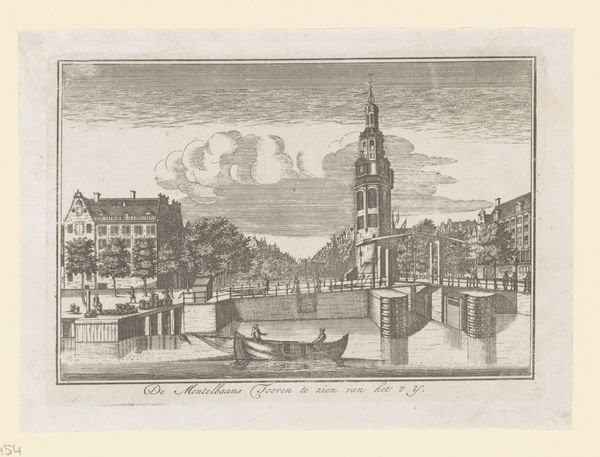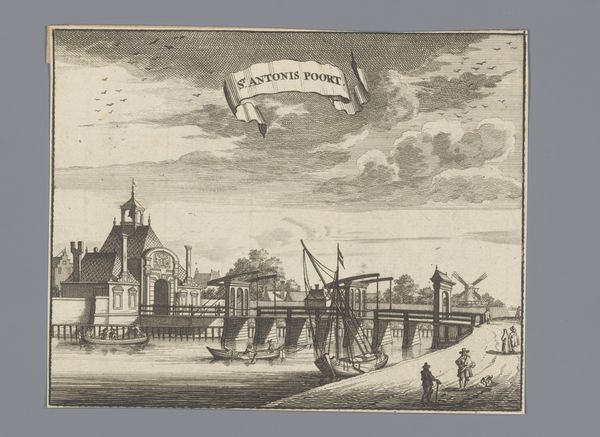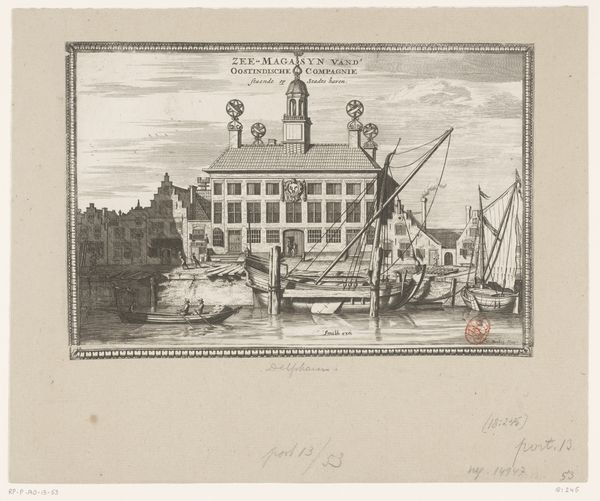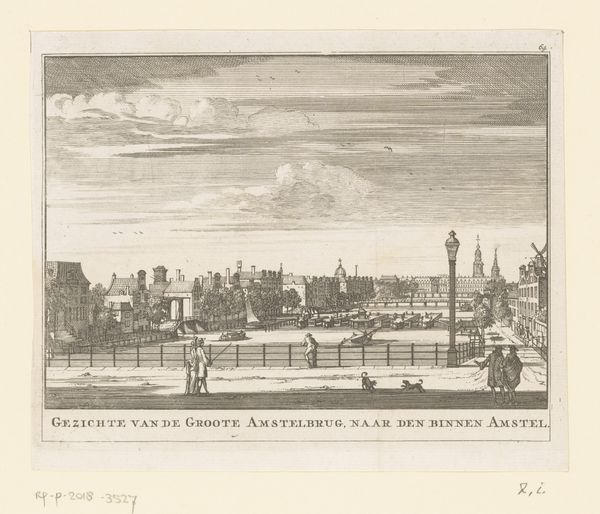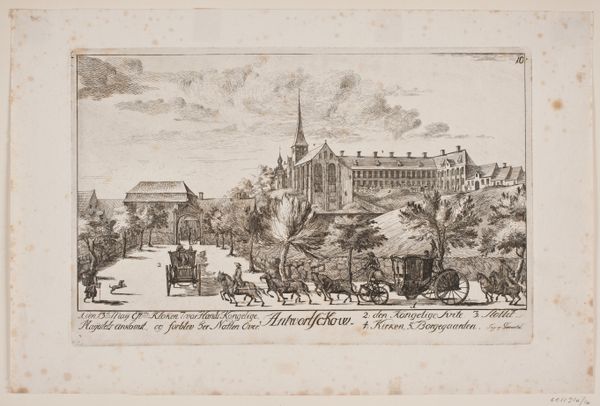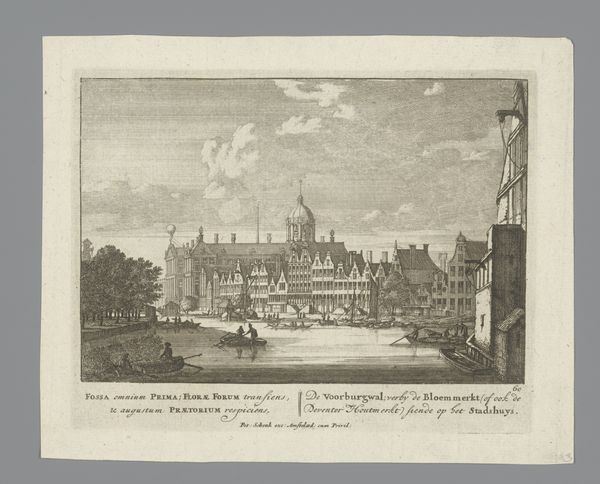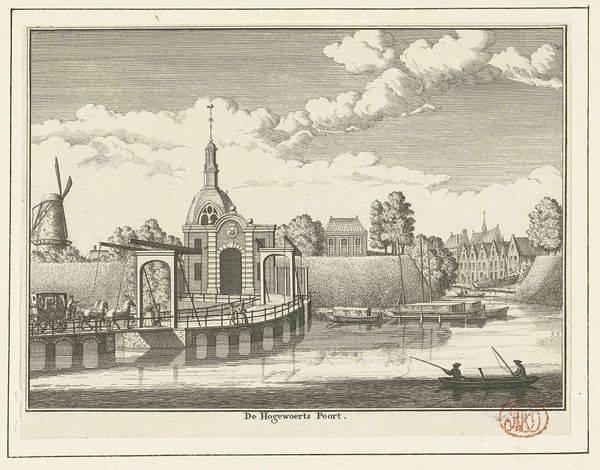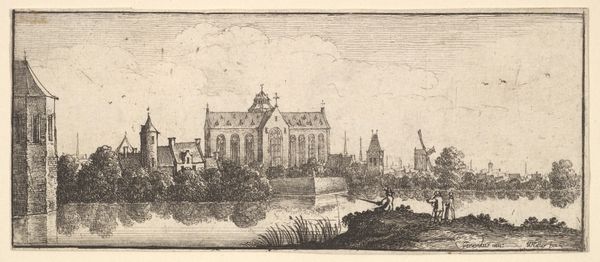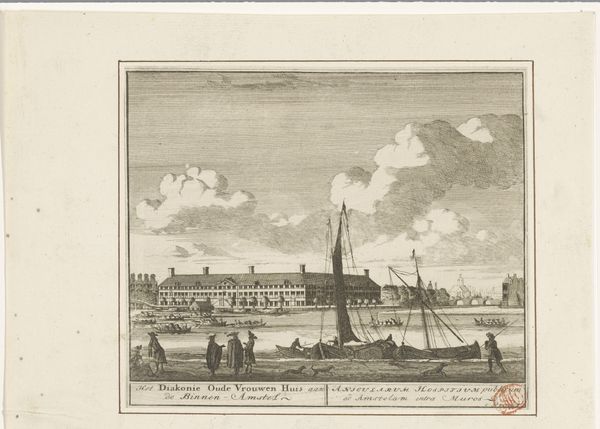
print, engraving
#
historical design
#
baroque
#
dutch-golden-age
# print
#
landscape
#
cityscape
#
engraving
Dimensions: height 114 mm, width 137 mm
Copyright: Rijks Museum: Open Domain
Editor: This print, titled "View of the Second Saint Anthony's Gate in Amsterdam" from 1665 by Jan Veenhuysen, depicts a serene cityscape. The fine lines create a delicate atmosphere. I’m curious, what sort of symbolic weight did cityscapes like this carry in the Dutch Golden Age? Curator: This image speaks to the rise of civic pride and mercantile power in the Netherlands. Notice the imposing gate itself, and consider that city gates have always symbolized protection, entry, and control. Here, what does the open gate suggest? Editor: Maybe openness to trade? A welcoming stance? Curator: Precisely. It's a powerful symbol of Amsterdam’s thriving economy and open society, a point of cultural exchange. And consider the windmill in the background – it is also not merely picturesque but evokes ideas of industriousness, prosperity, and the harnessing of natural power. Editor: That makes sense. So even everyday elements contributed to a bigger picture. But the figures walking and boating… do they also factor into the meaning? Curator: Absolutely! They embody the daily life and activity that animate the city. Their inclusion domesticates this hub of industry and alludes to humanism. What story do you think the artist is hoping to tell? Editor: It seems that he is highlighting Amsterdam as a place of prosperity, open to commerce, and where people coexist harmoniously. Thank you; I never looked at cityscapes as carriers of symbolic meaning like this before! Curator: My pleasure. It demonstrates how seemingly simple images can reveal deeply ingrained cultural values. I see a visual argument here!
Comments
No comments
Be the first to comment and join the conversation on the ultimate creative platform.

